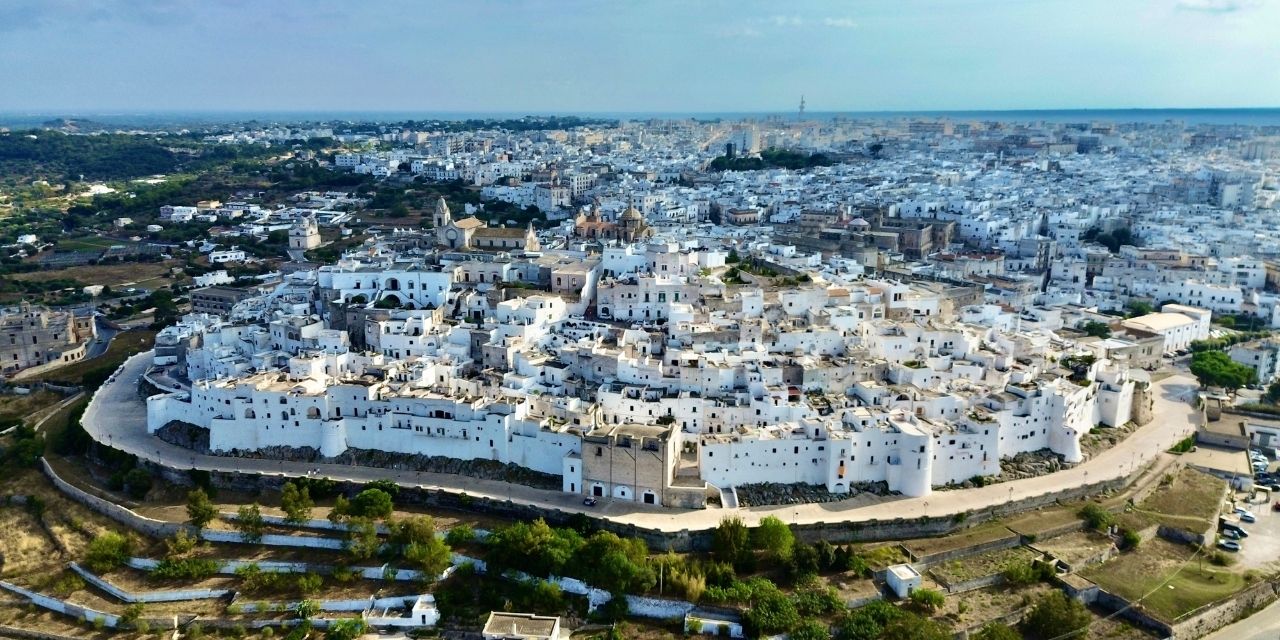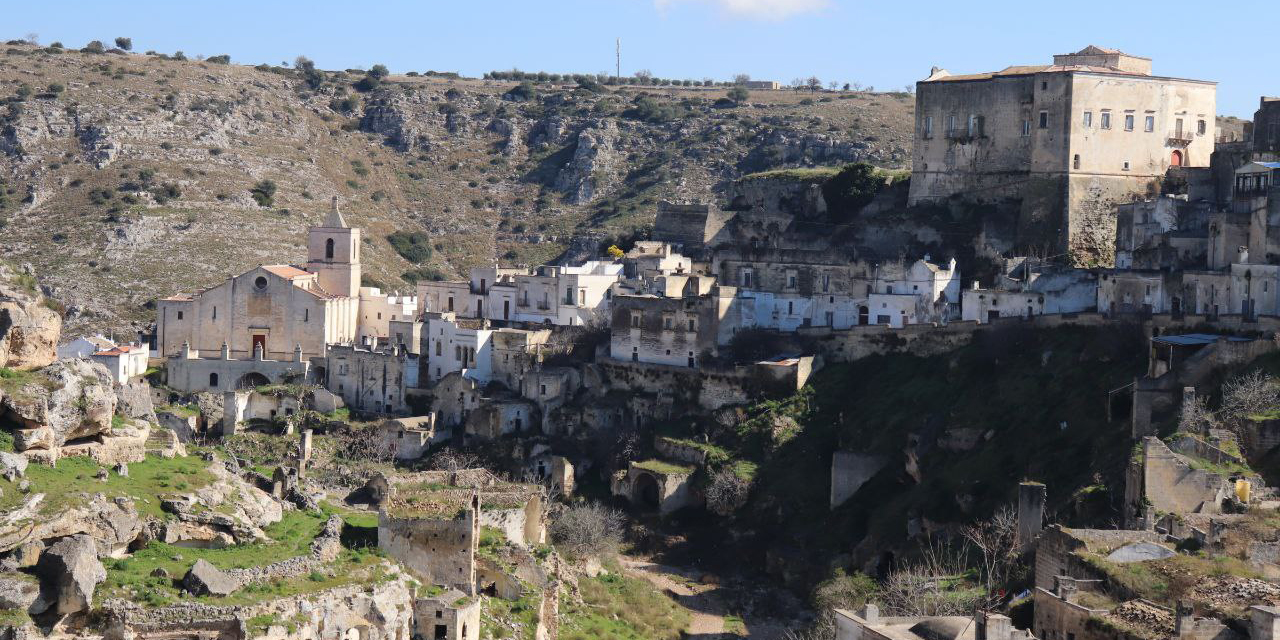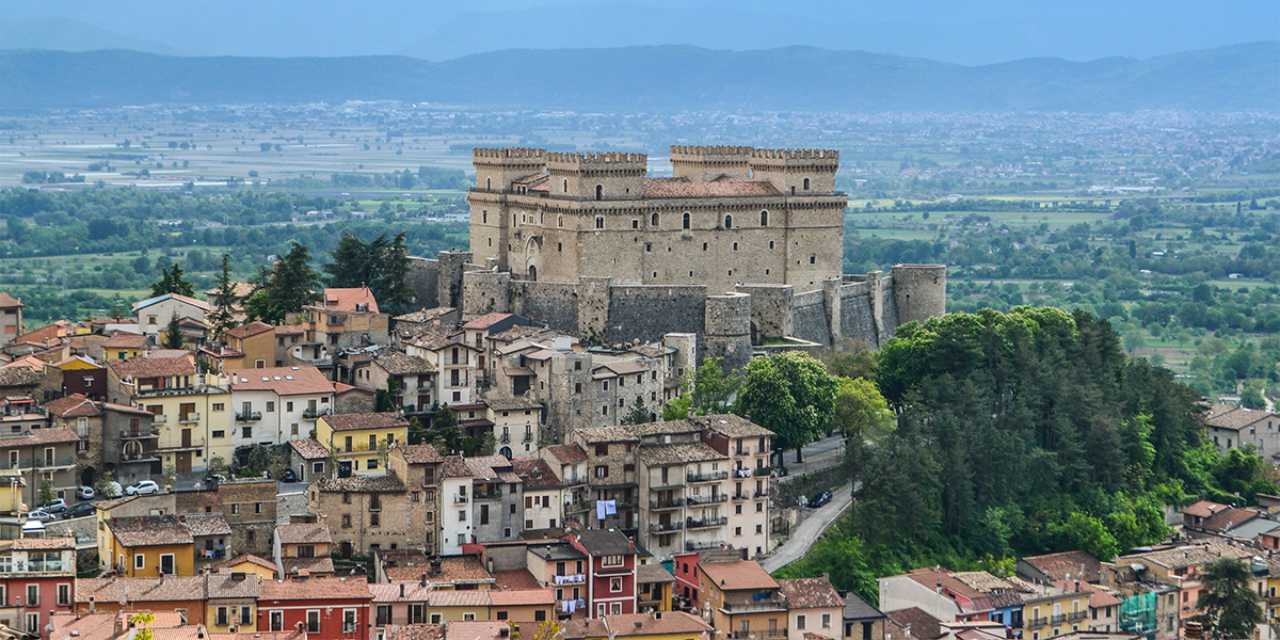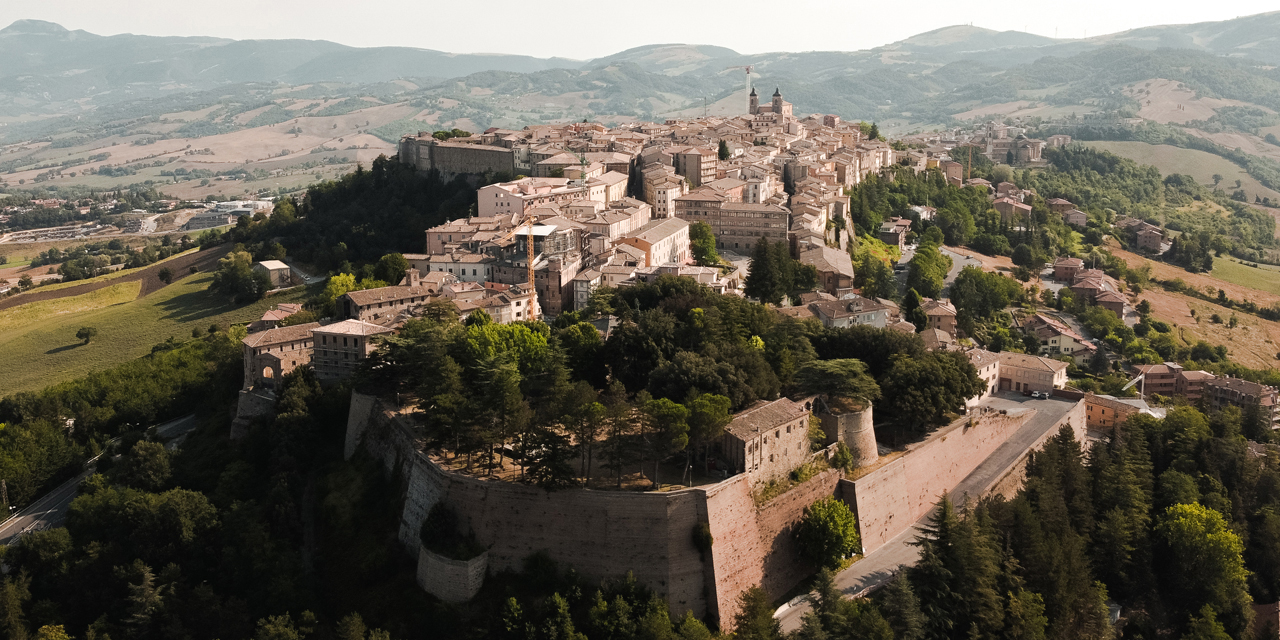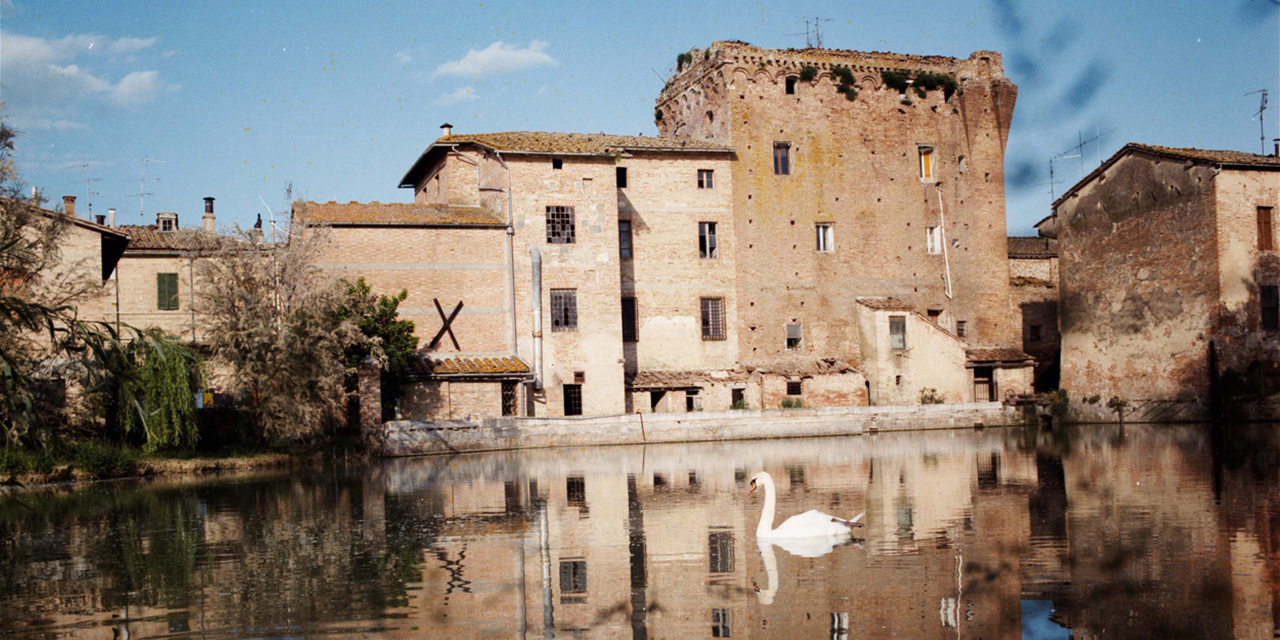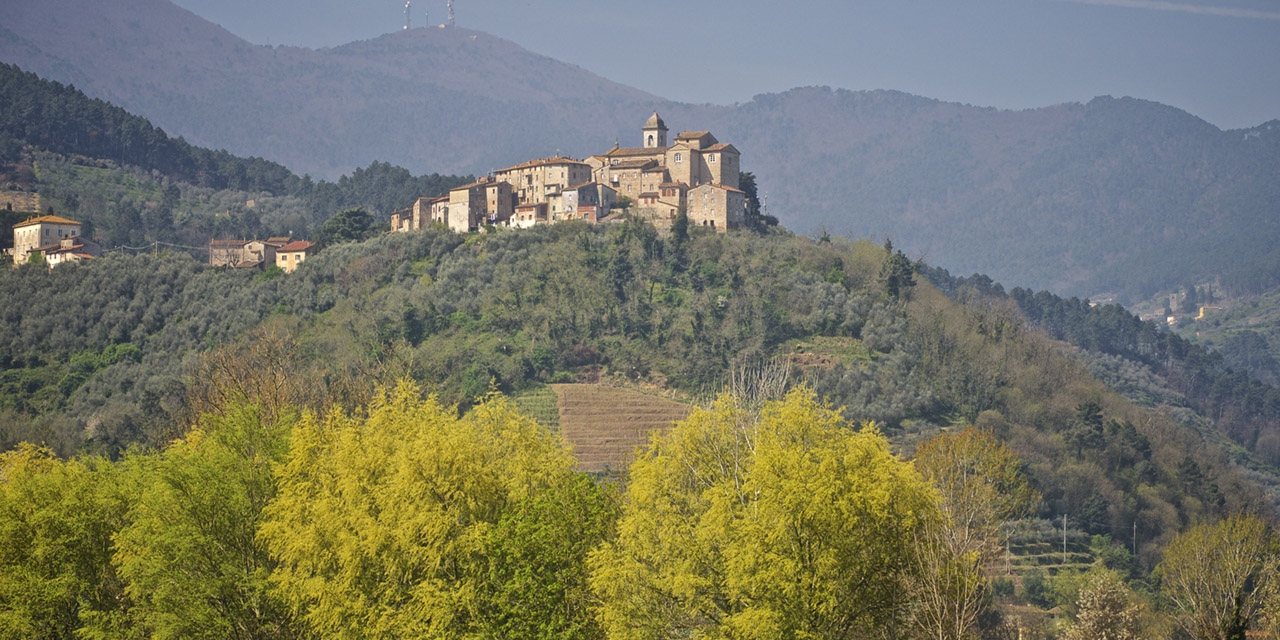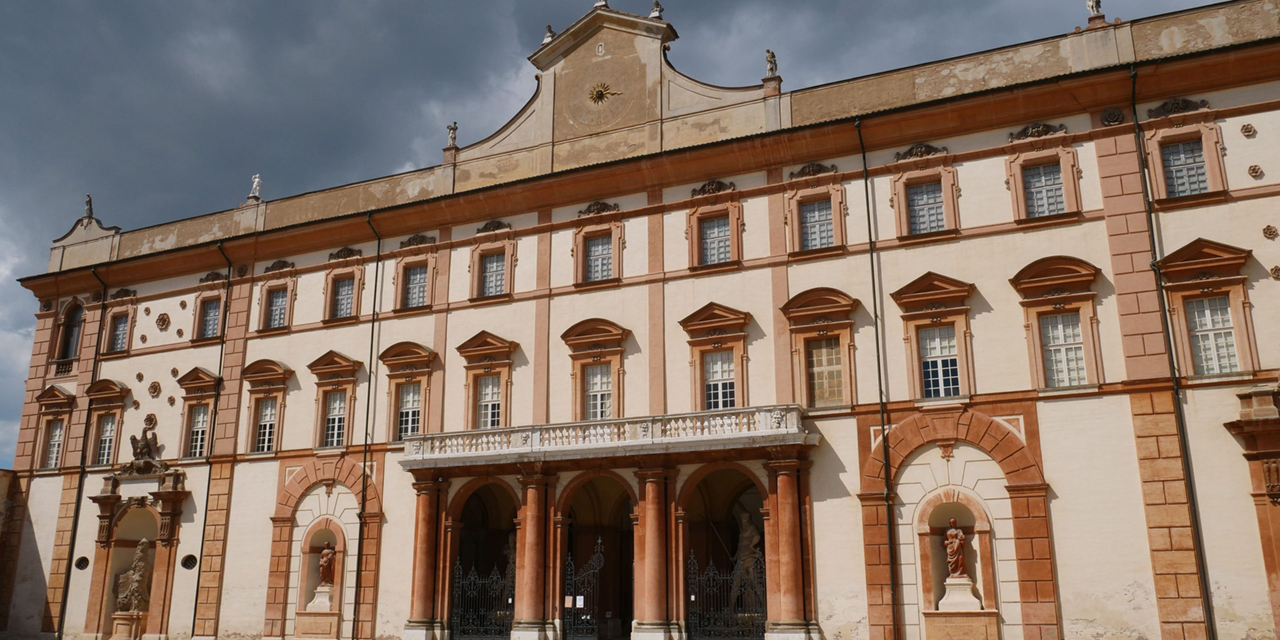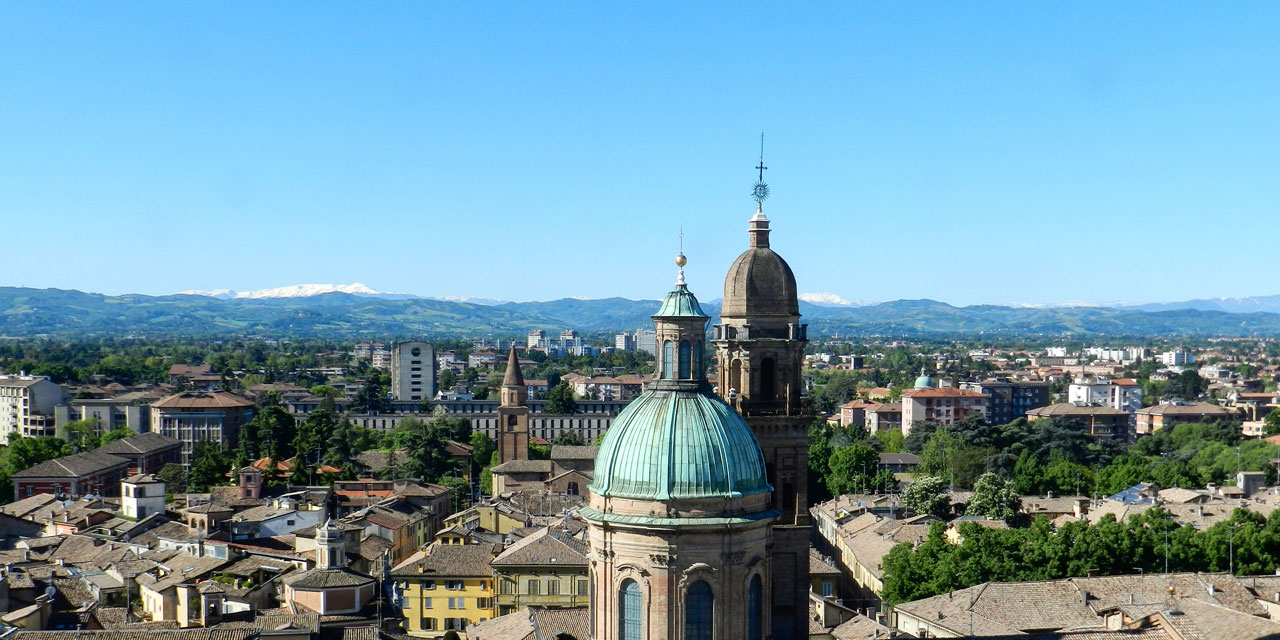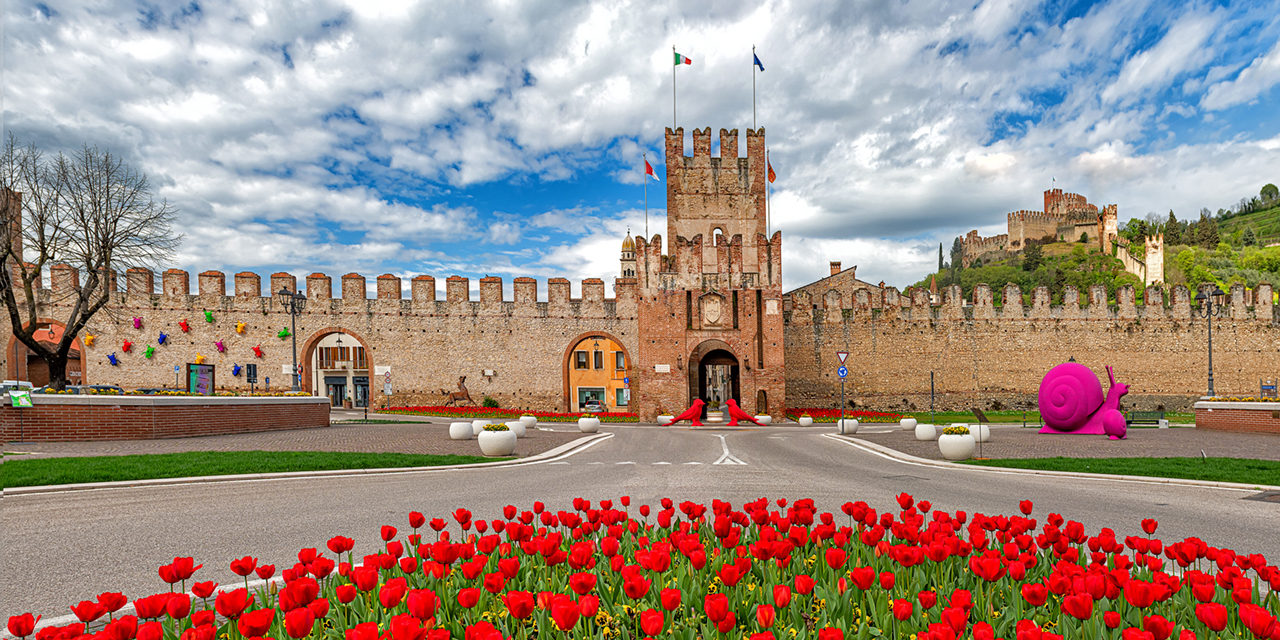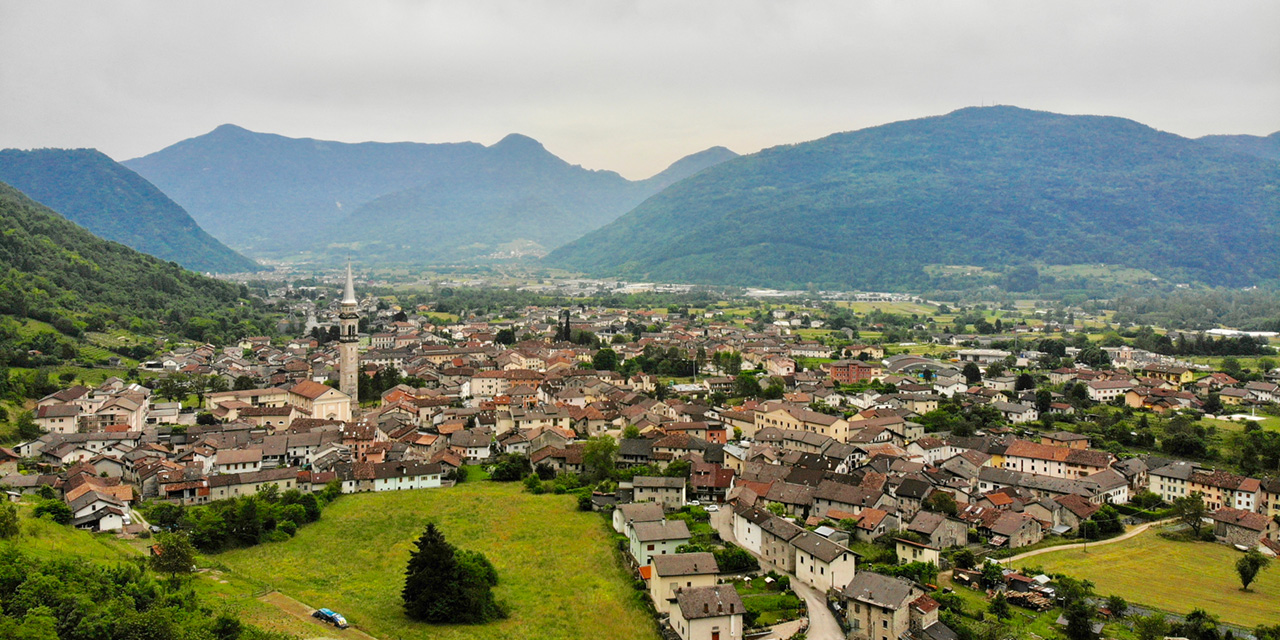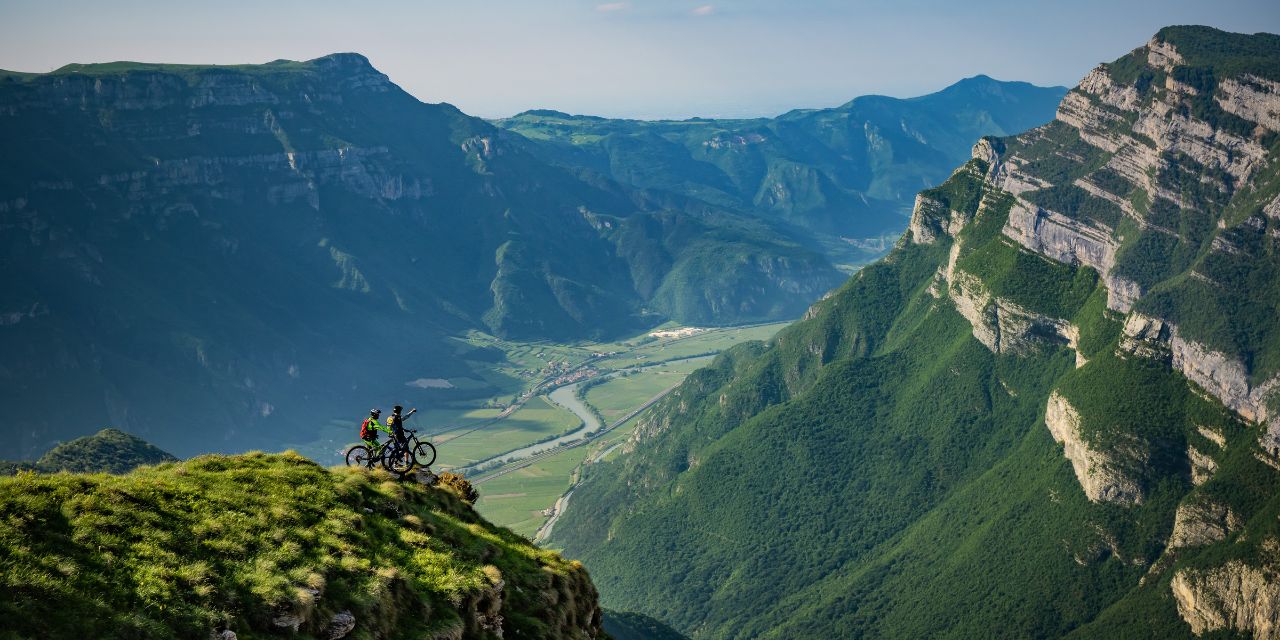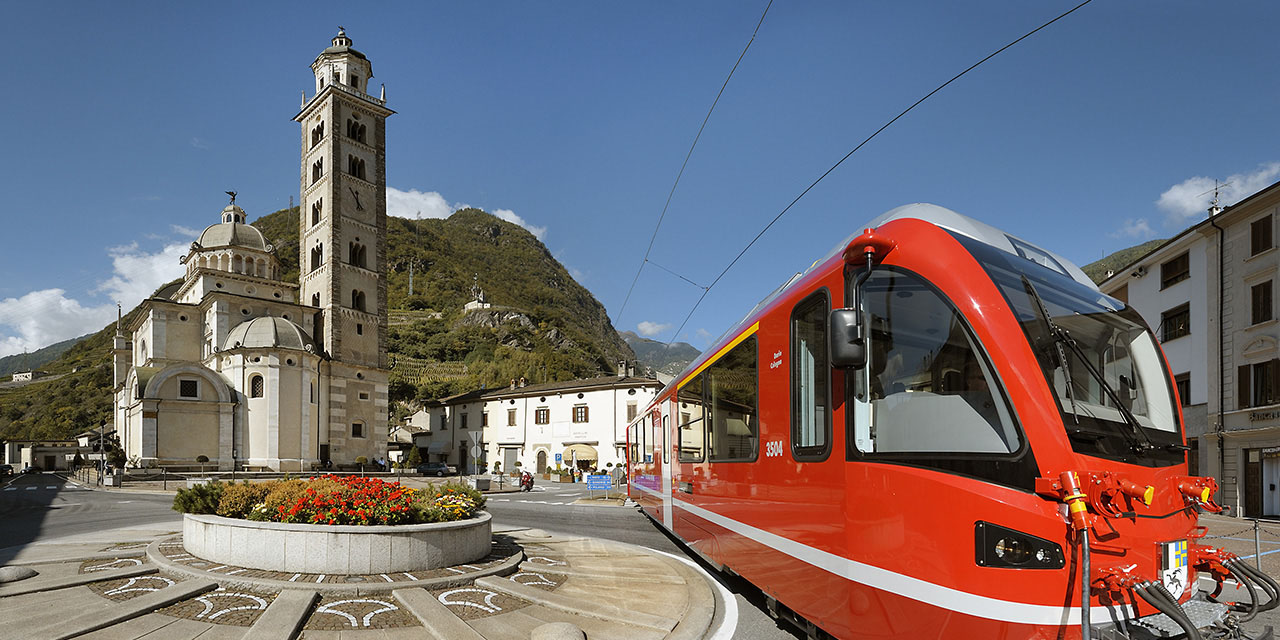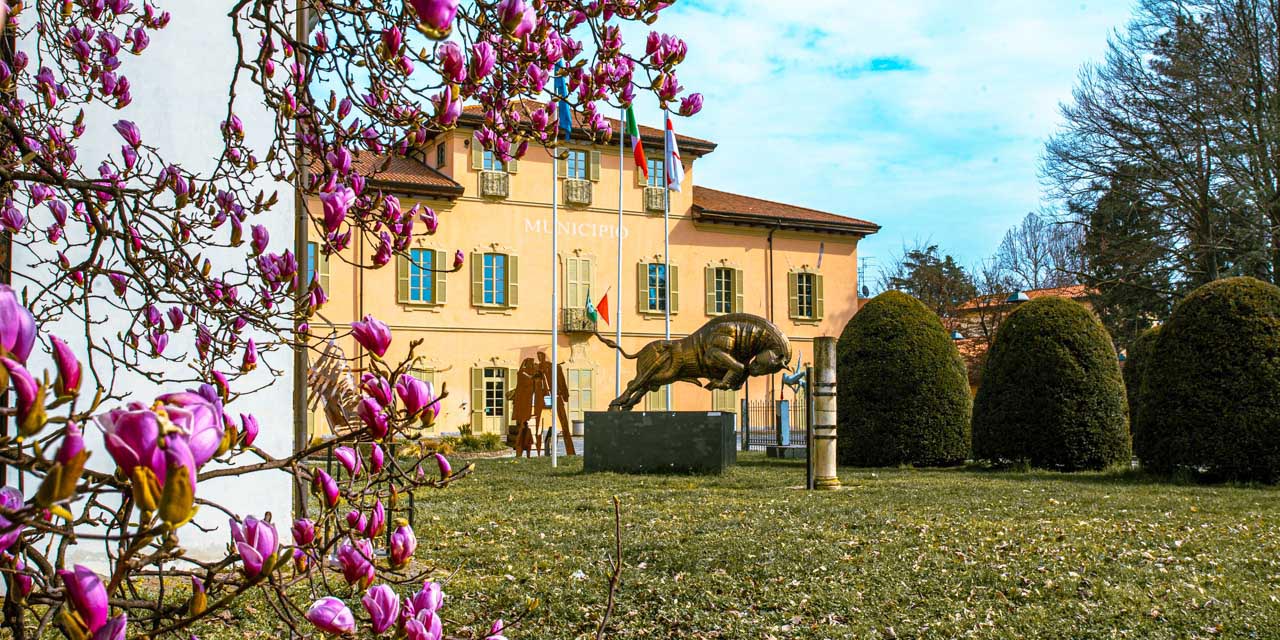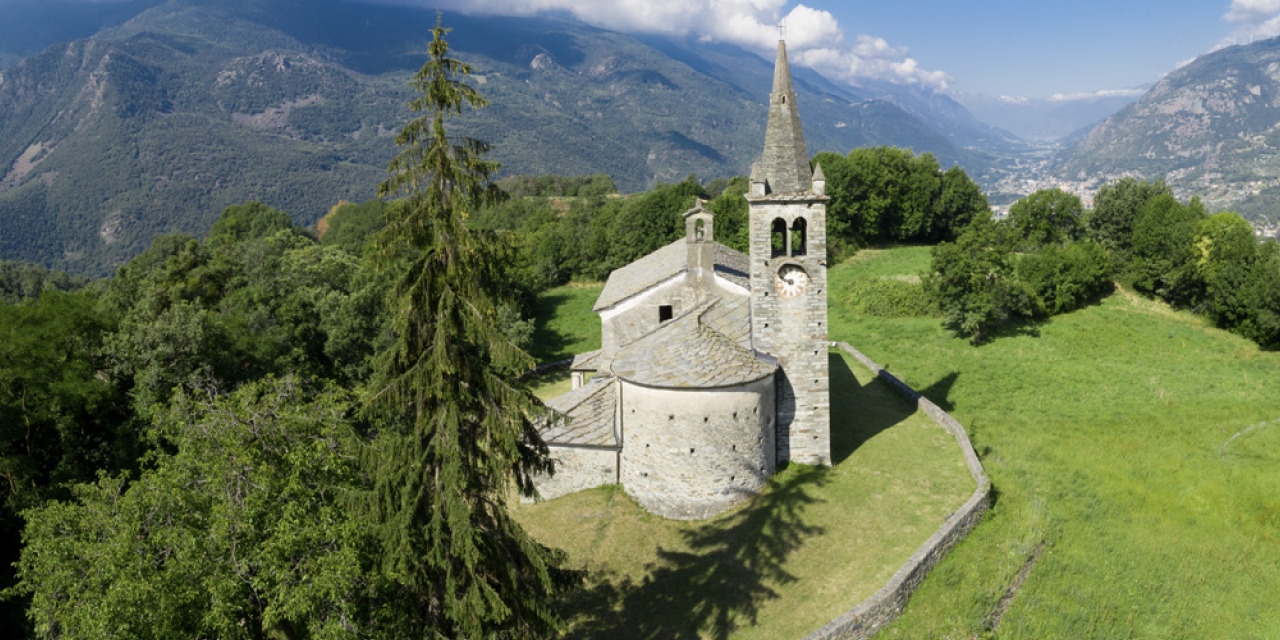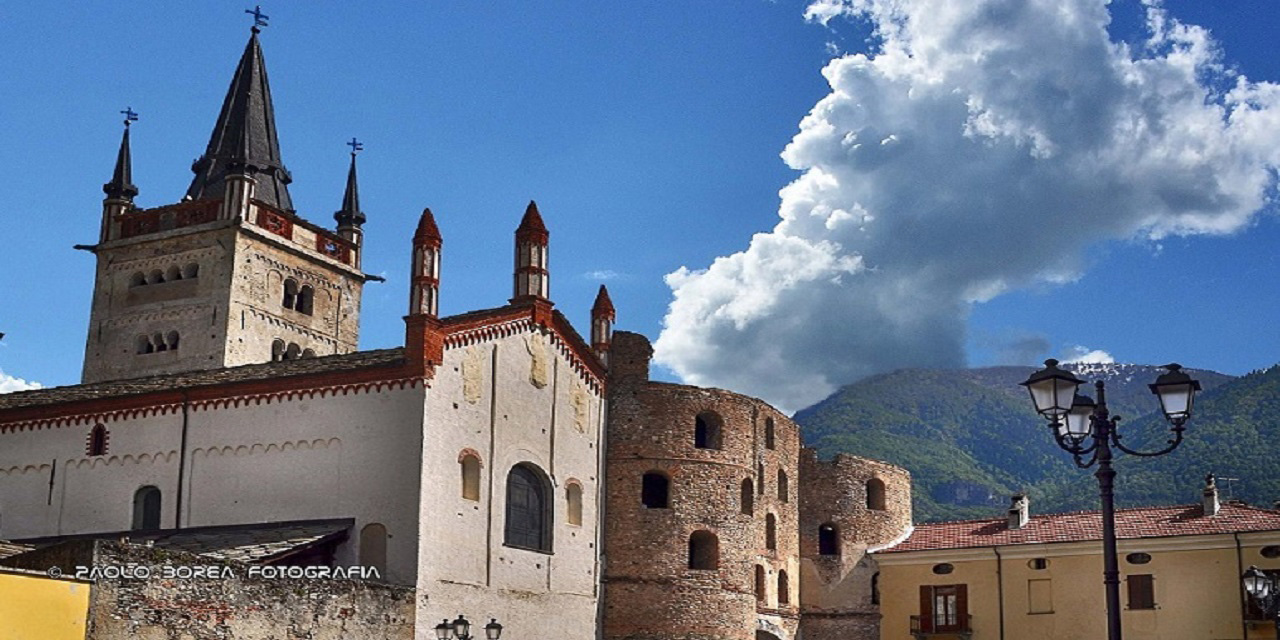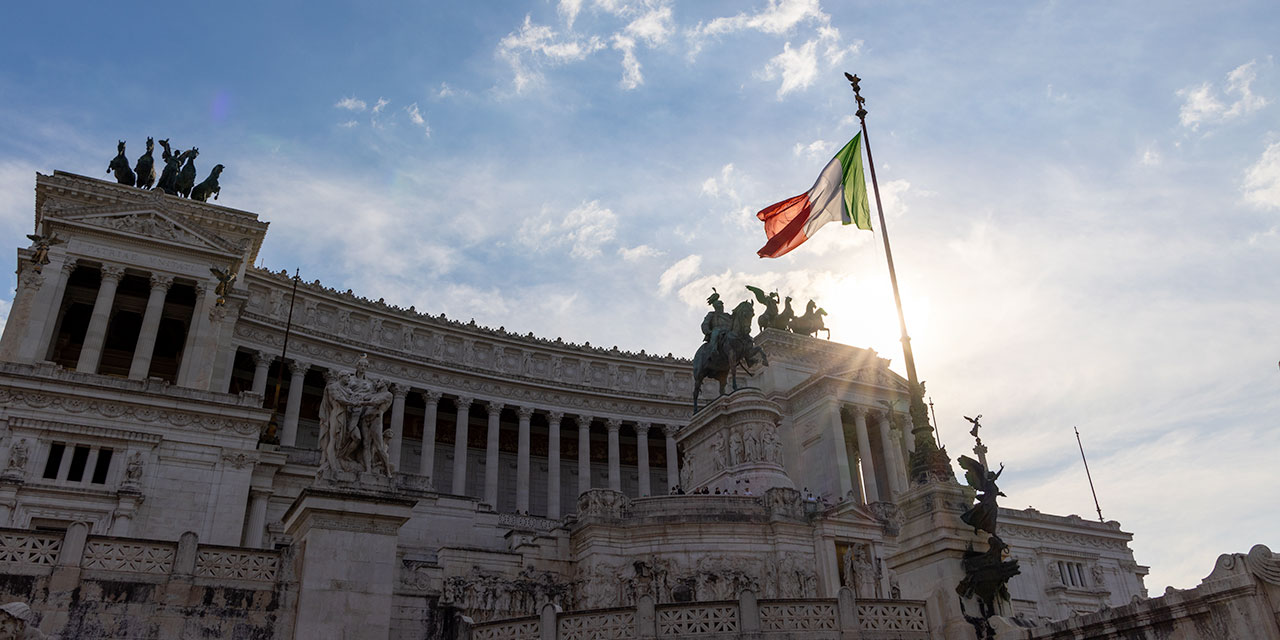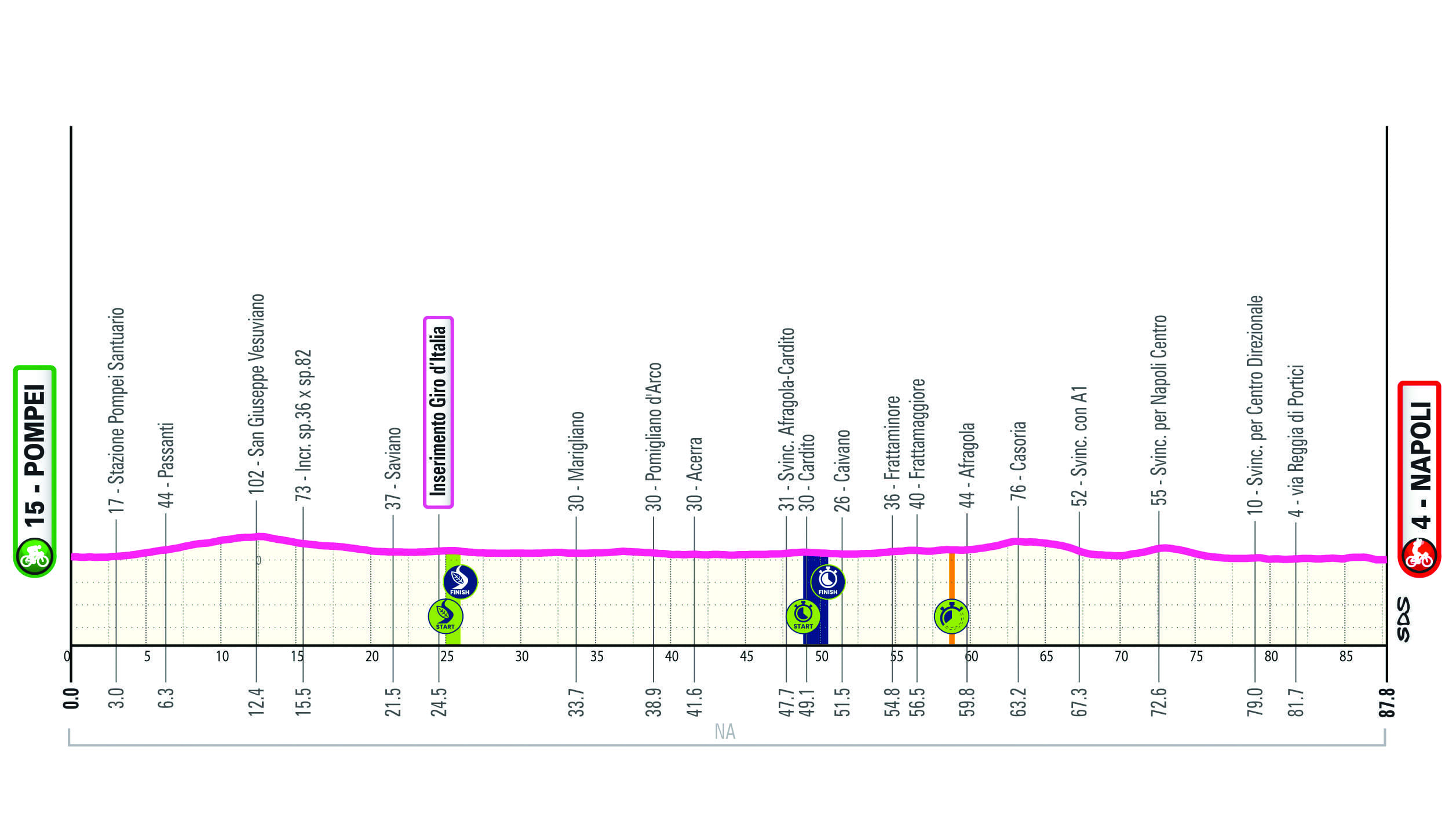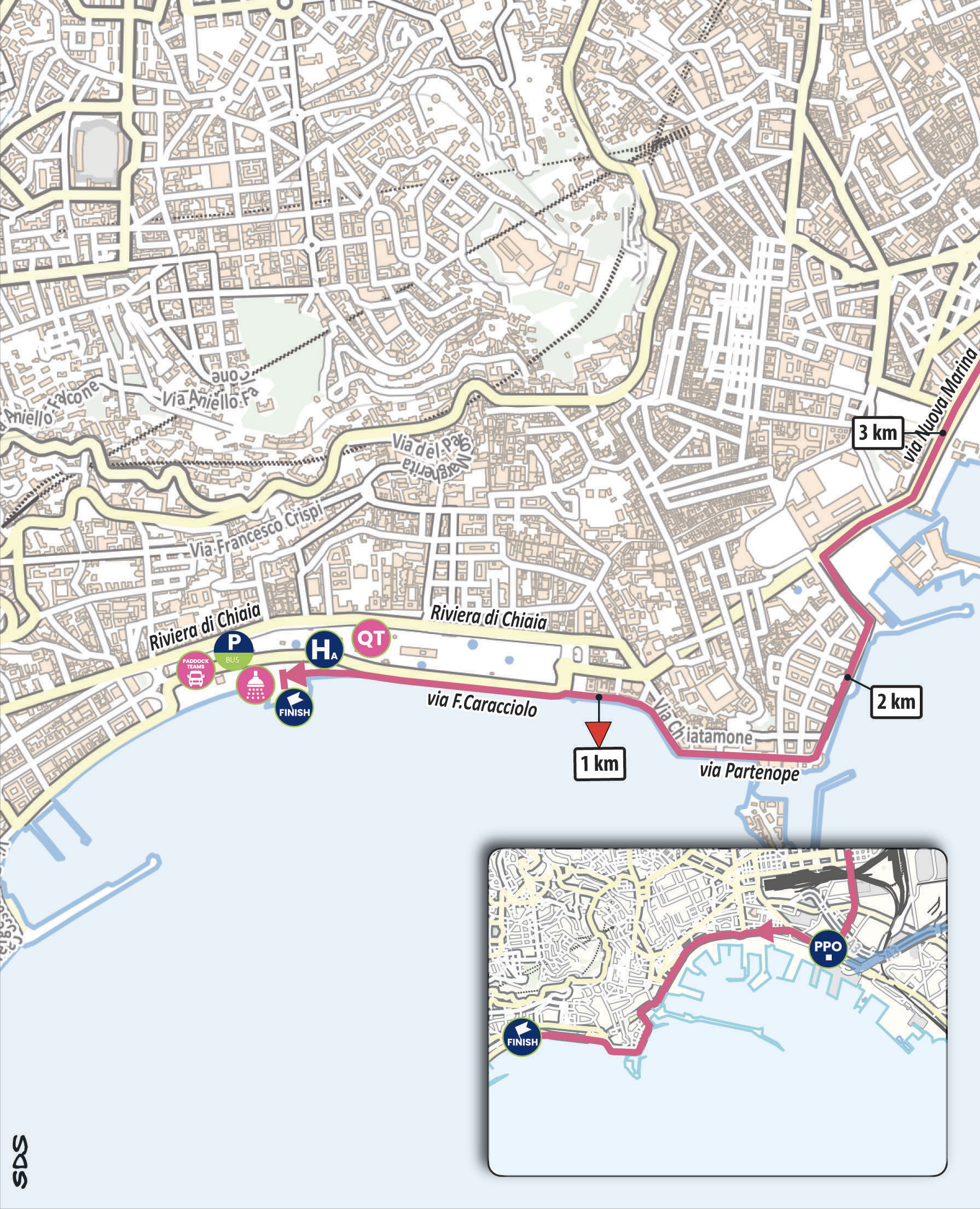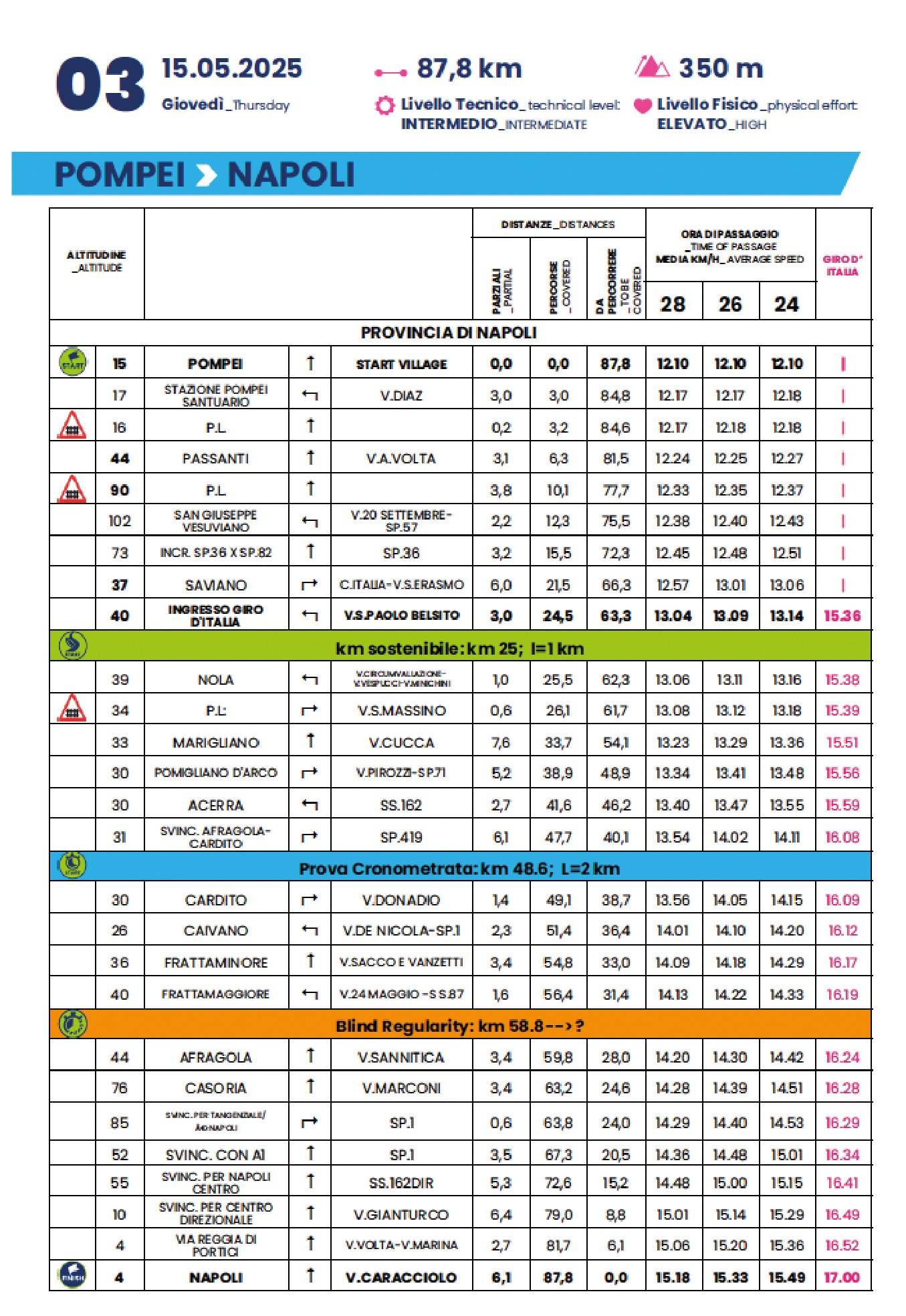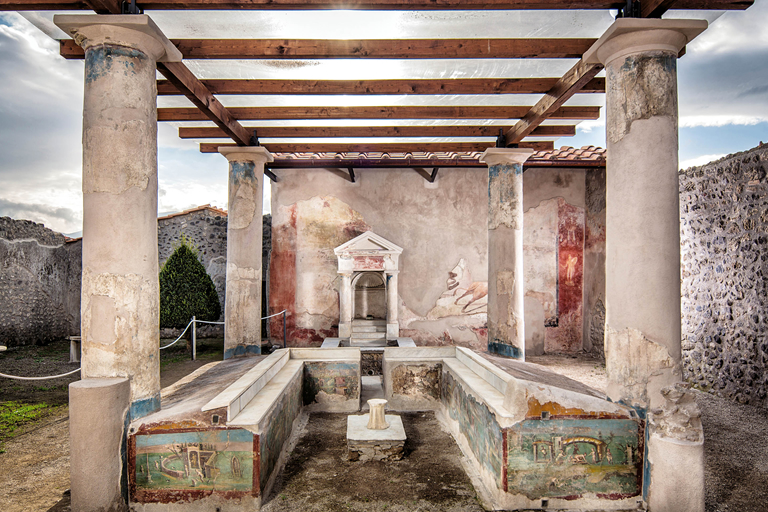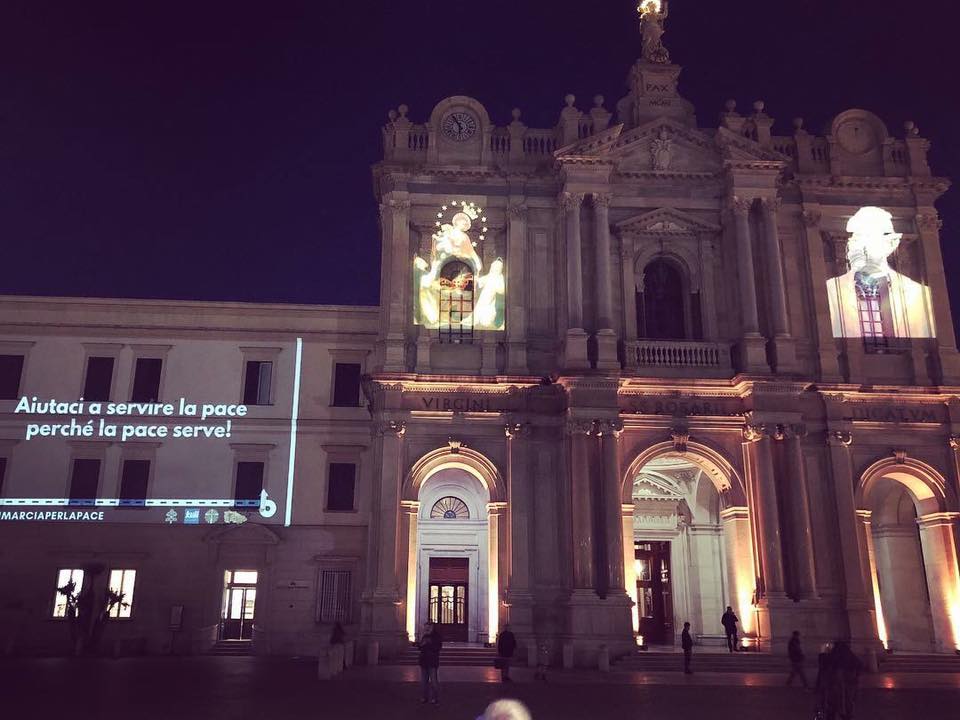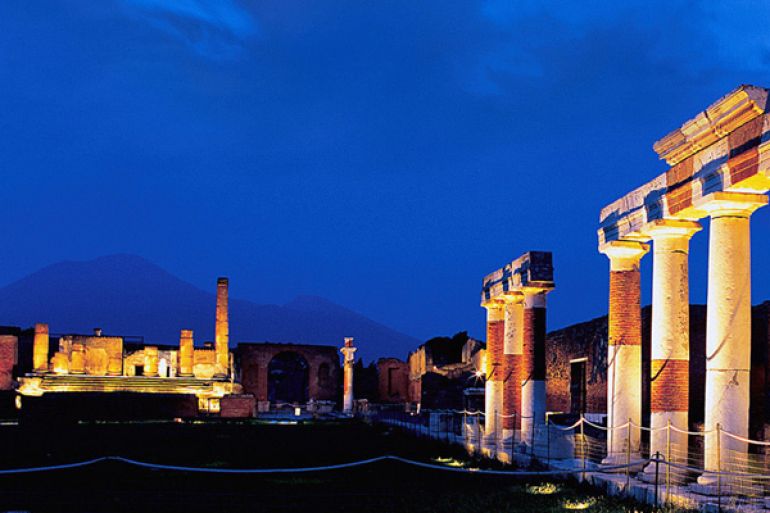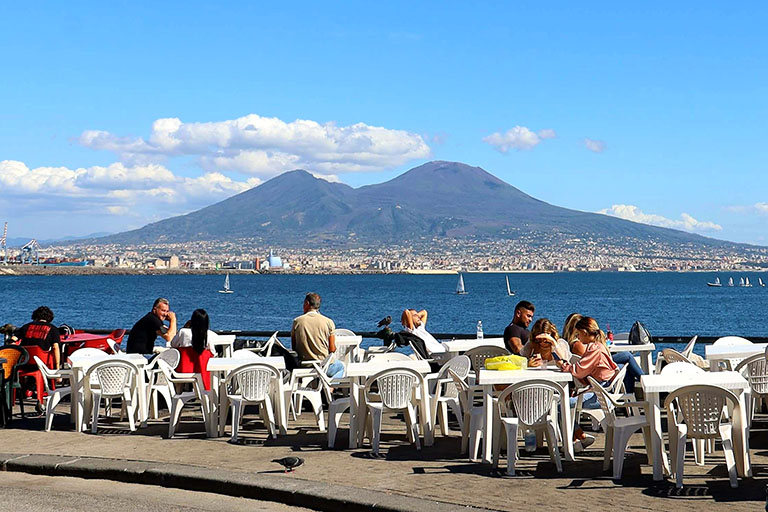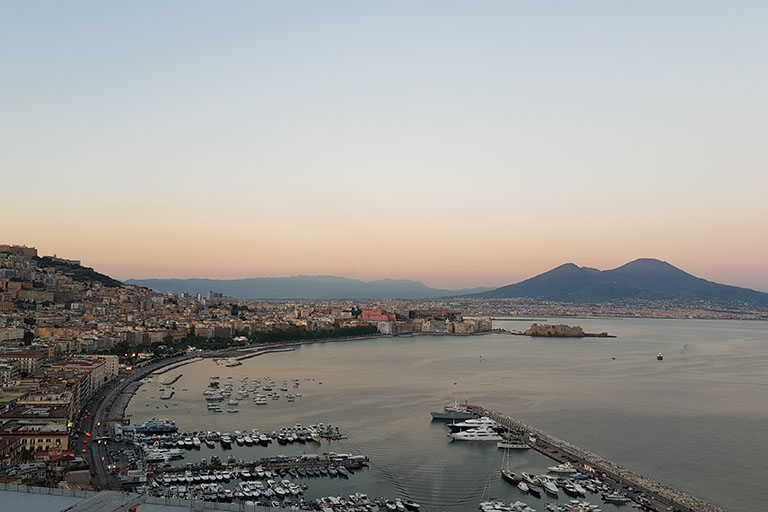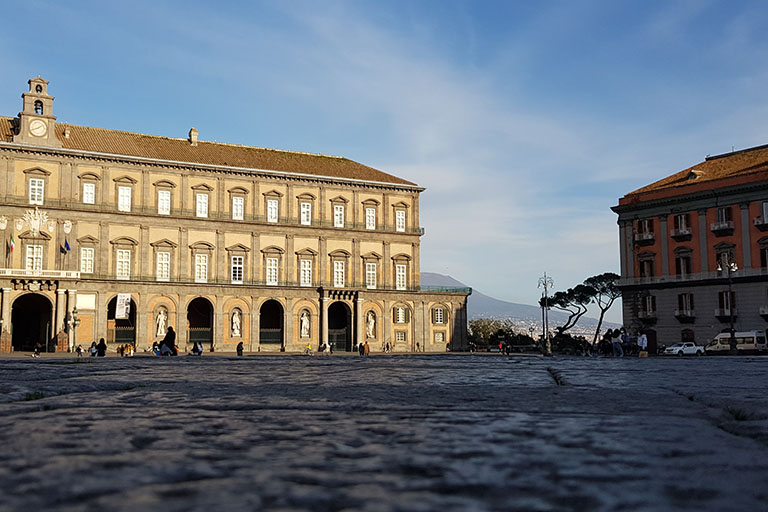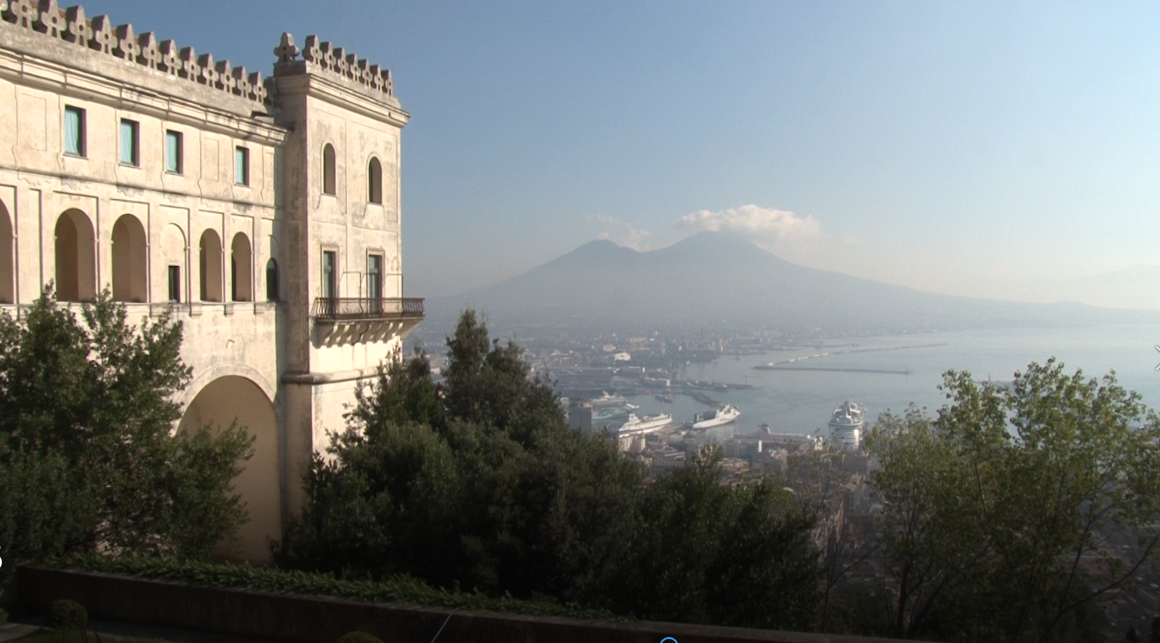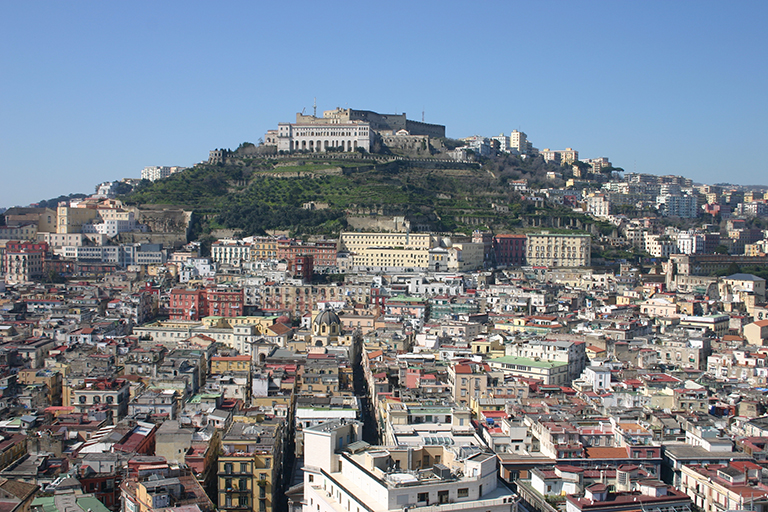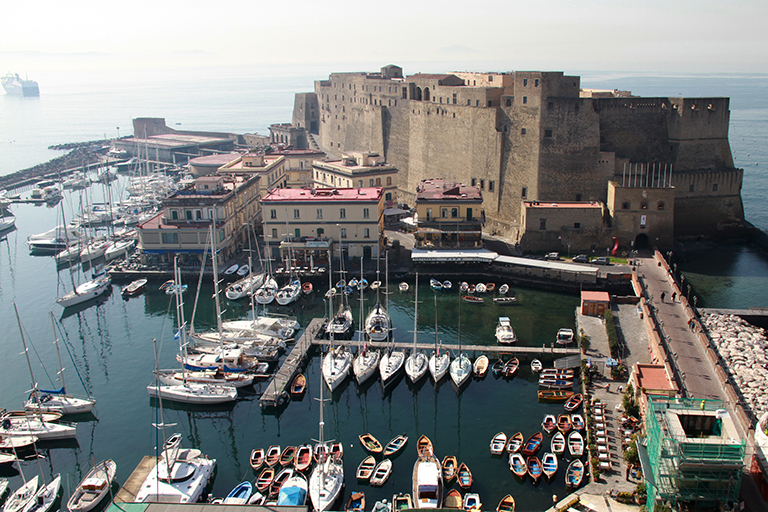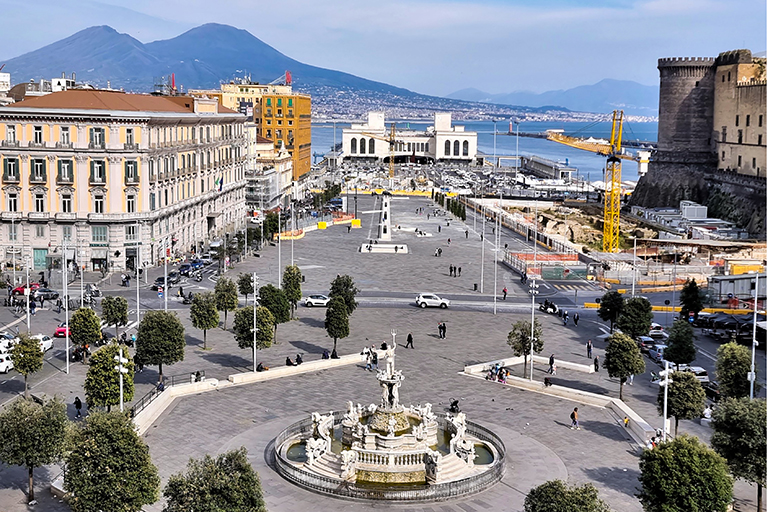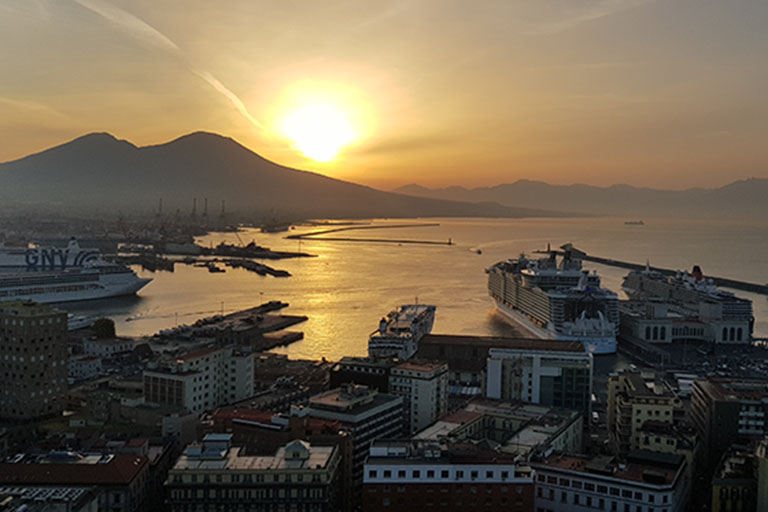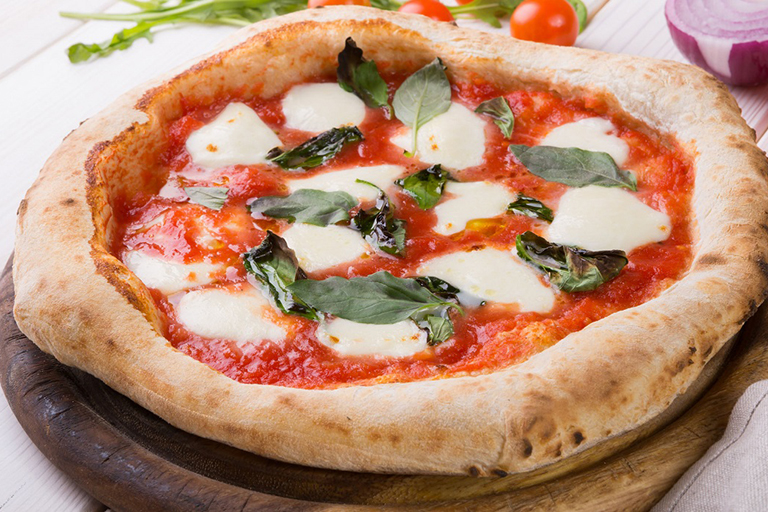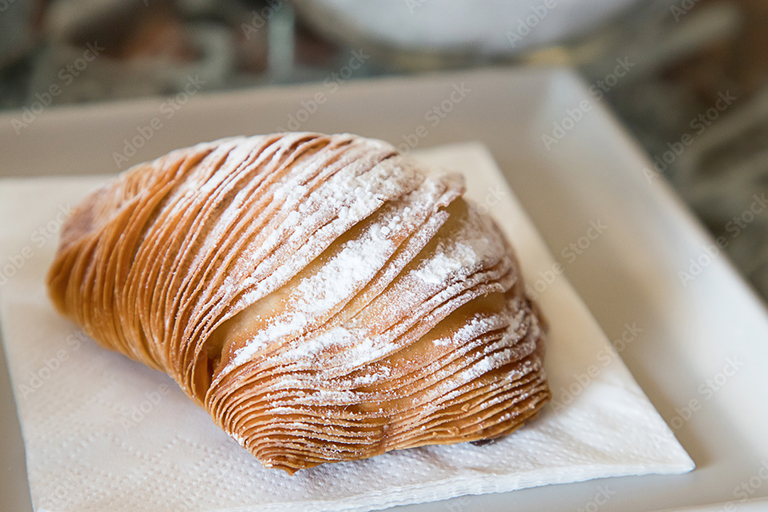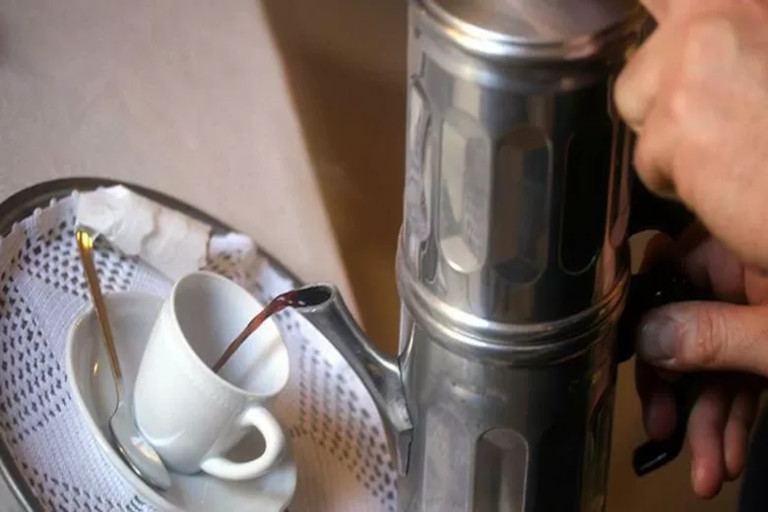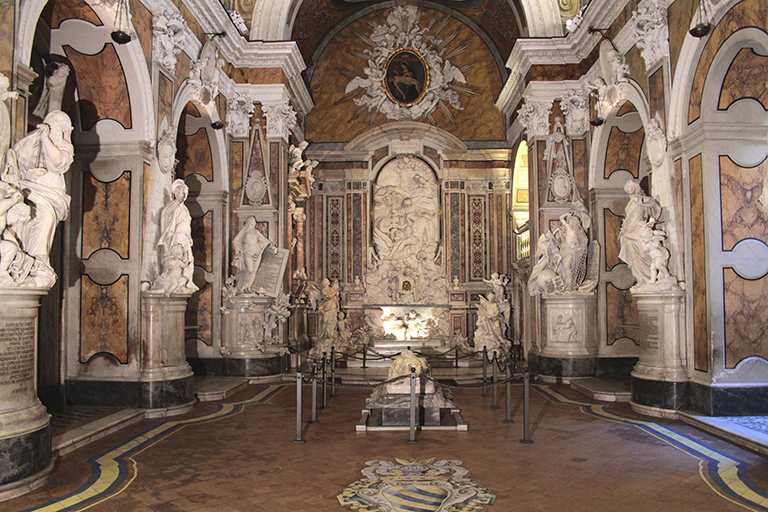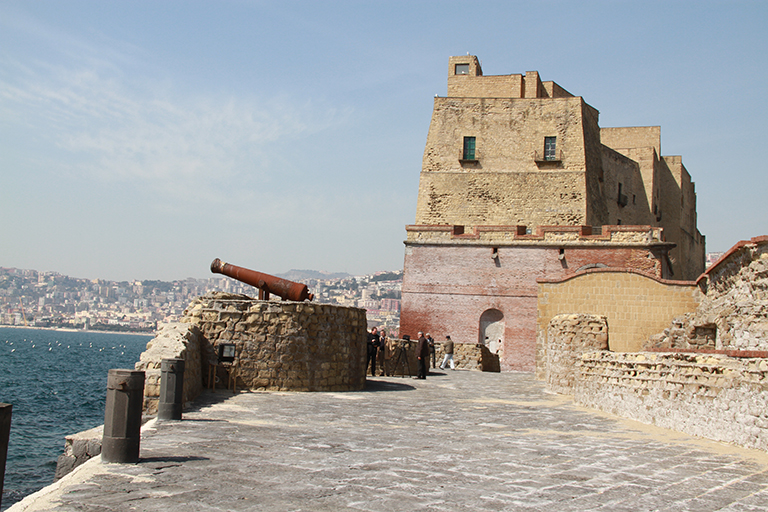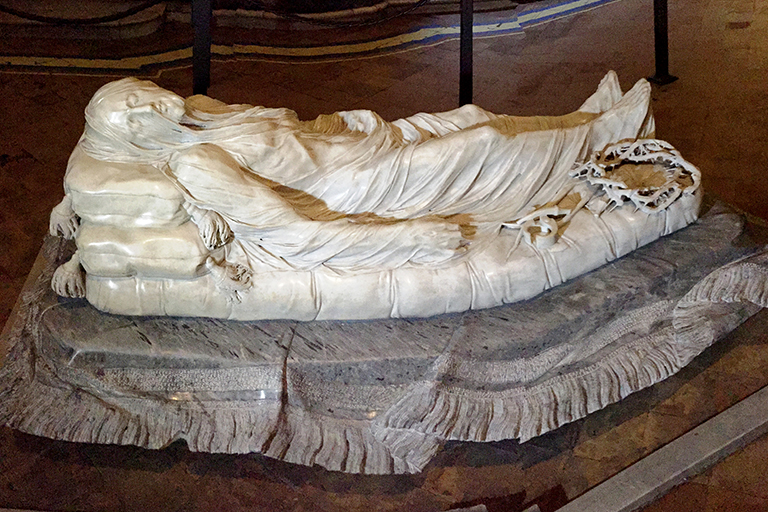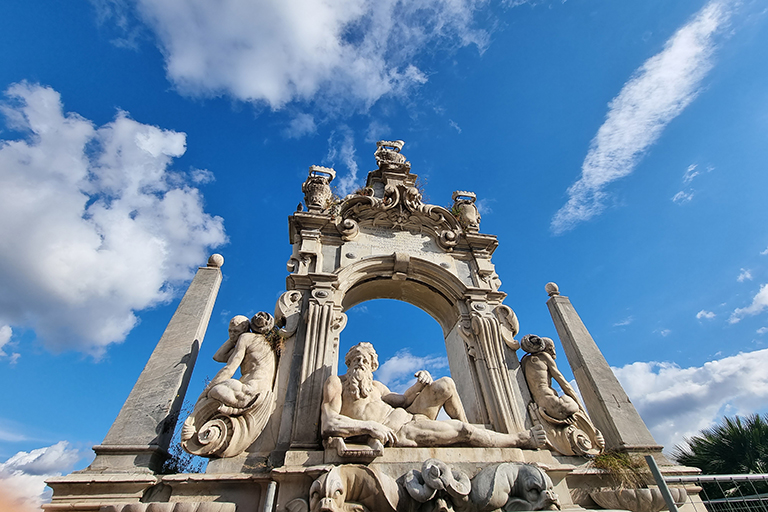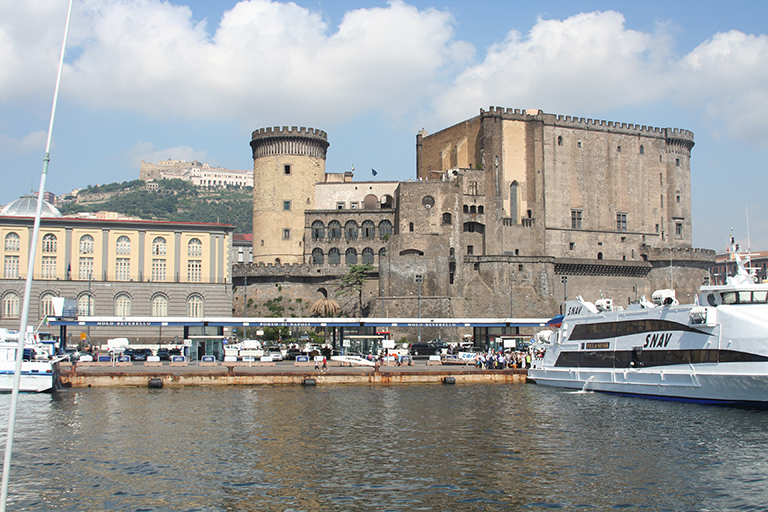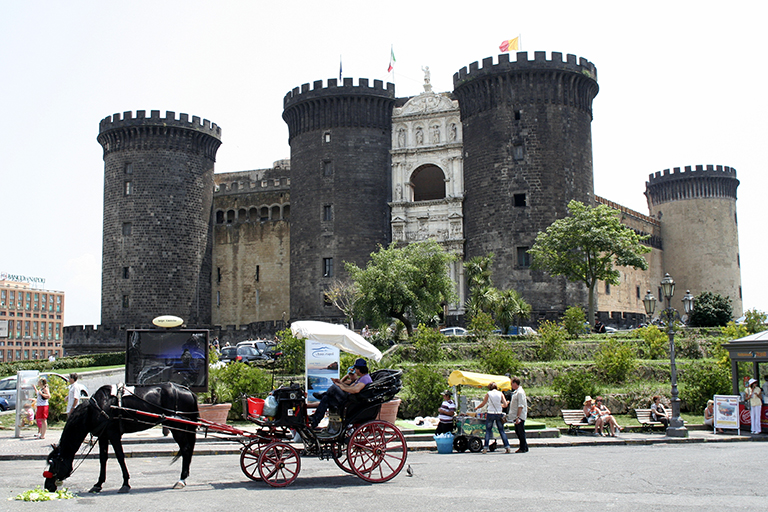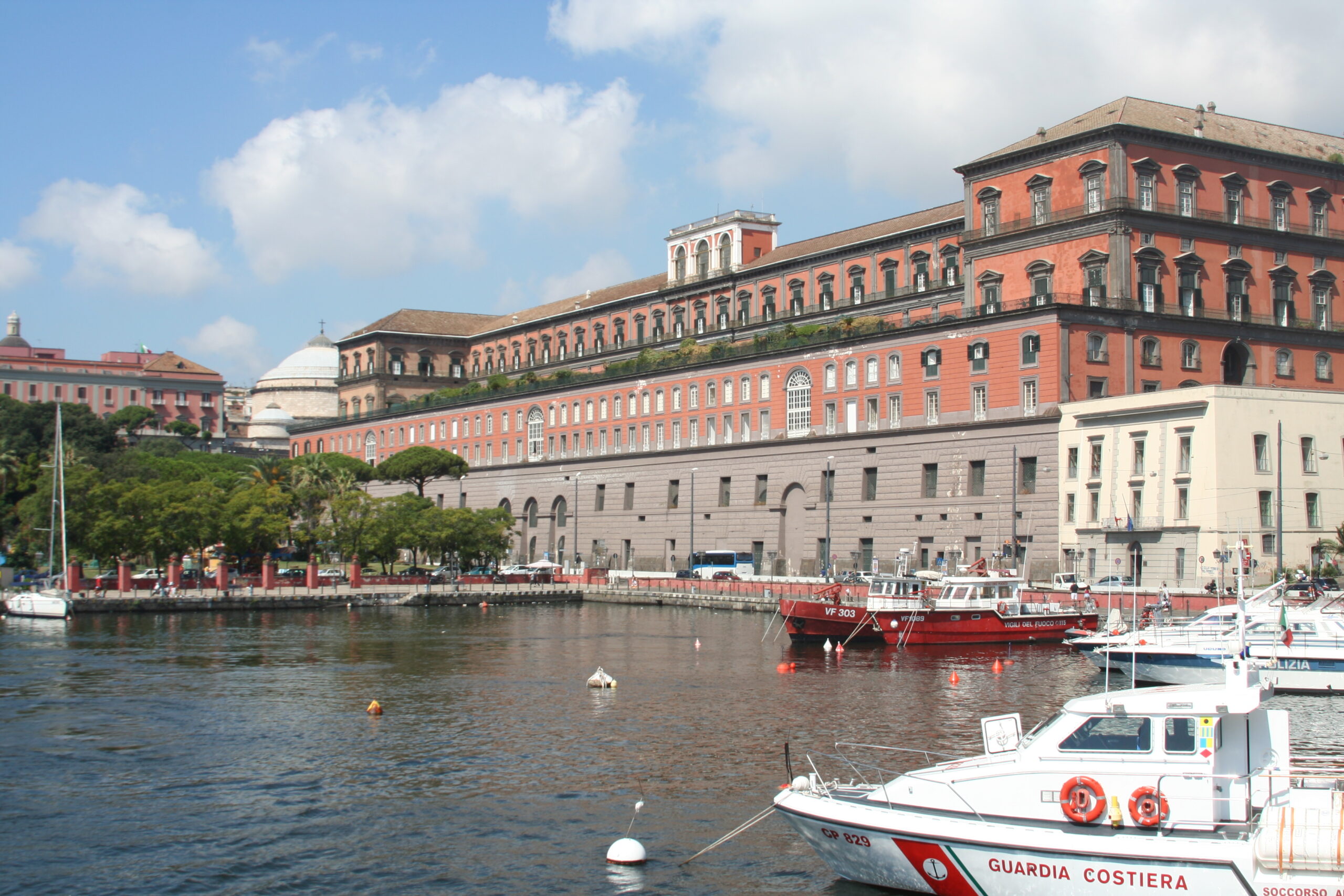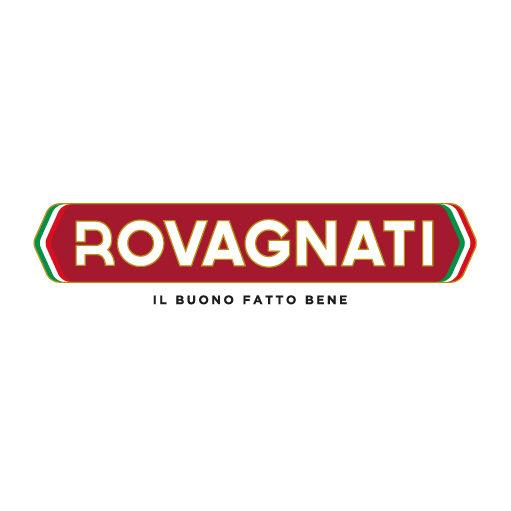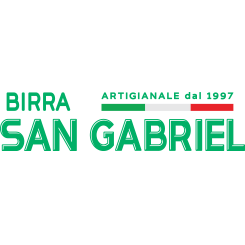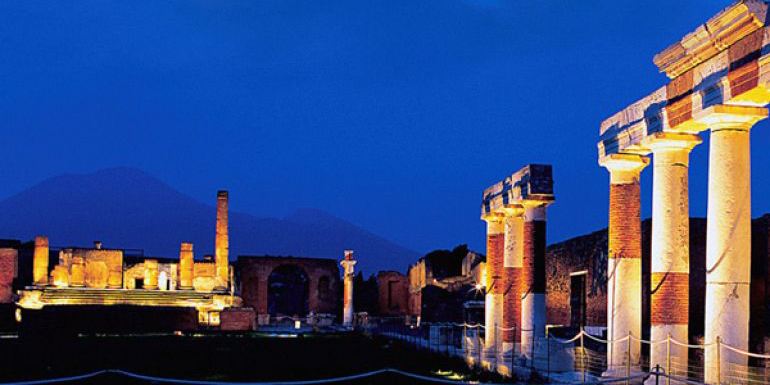
Stage
3
Thursday 15
May 2025
87,8 km
Altitude gain 350 mt
Technical Level: Intermediate
Physical Effort: Elevato

Pompei -
Napoli
Pompei - Napoli
tourist info
Host city:
Pompei
Gastronomy
The “Piennolo del Vesuvio” PDO tomato: this is one of the oldest and most distinctive agricultural products in Campania, so much so that it is even depicted in the scene of the traditional Neapolitan nativity scene. For the purposes of safeguarding the product, it was found that the special feature common to Vesuvius cherry tomatoes is the ancient practice of preserving them ‘al piennolo’, i.e. a characteristic technique for tying a few bunches of ripe tomatoes together to form a large bunch that is then hung in ventilated rooms, thus ensuring optimal preservation until the end of the winter.
Points of interest
Pompeii Archaeological Park: Pompeii is the only archaeological site in the world that can show the appearance of an ancient Roman centre in its entirety. Rich in trade and bustling with life, the city was as if crystallised by the famous eruption of 79 b.C., during which a storm of ash and lapilli swallowed its inhabitants, houses, streets, public buildings and objects of everyday life. Everything was as if ‘frozen’ in a terrible snapshot. A World Heritage Site since 1997, the surface area of the ancient city covers about 66 hectares, while the excavated area is about 44. One thousand five hundred buildings (domus and monuments) have been brought to light. This is not simply an extensive archaeological area, but a complex urban organism, an entire ancient city, which recovered from the earthquake of 62 b.C. only to be hit shortly afterwards by the Vesuvian eruption of 79 b.C.
Sito Protostorico Longola – Poggiomarino: in November 2000, during excavations for the construction of one of the four water purifiers of the Sarno river, archaeological finds surfaced in Poggiomarino which prompted work supervisors to inform the Archaeological Superintendency of Pompeii, now the Archaeological Park of Pompeii. The archaeological site of Longola, defined by archaeologists as a “Venice of 3500 years ago”, represents a very useful piece of evidence for the reconstruction of a time span ranging from the advanced phase of the Middle Bronze Age (15th-13th century b.C.) to the recent Orientalizing period (early 6th century b.C.) for the history of the Sarno valley.
The sanctuary of Pompeii: an enchanting place of art, and not only because of the paintings on the domes’ ceilings. Its Baroque architecture, with its imposing white and gold façade, makes it, with its 3 million visitors a year, the most visited sanctuary in Italy, beating illustrious competitors such as St. Anthony of Padua and St. Francis of Assisi.
Early Christian Basilica of Cimitile: an exemplary monument of the transition from the Roman to the medieval age, from paganism to Christianity.
(the first buildings date back to the 4th century a.C.), the basilica complex of Cimitile represents a centre of culture and religiosity whose fame crosses regional borders. The history of the sanctuary is linked to the presence of the remains of the martyr Felix, on whose tomb stands one of the oldest churches in Campania.
Napoli
Overview
One of Italy’s most fascinating and historic cities, Naples is known for its cultural, artistic, and culinary heritage. This UNESCO-listed historic center is home to landmarks such as the Duomo, Castel Nuovo, and the Royal Palace. Naples is also the birthplace of pizza and a city of music, boasting the renowned Teatro San Carlo. Overlooking the city is Mount Vesuvius, while the Amalfi Coast offers stunning nearby escapes.
Gastronomy
If any food should be associated with Naples, it would definitely be pizza: the classic and most famous “pizza Margherita”, topped with mozzarella cheese, tomatoes and a leaf of basil, has been joined by many new and refined “gourmet” recipes, recently in vogue and able to suit all tastes. Pizza, in Naples, is a “serious matter” and the job of “making it” is considered as pure art: that is why nothing is improvised, and its preparation is made of precise gestures and procedures, wisely handed down from one artisan to another. In fact, in 2017 the “art of Neapolitan pizza-makers” was declared “Intangible Heritage of Humanity” by UNESCO, thereby recognising pizza’s cultural relevance and identity value as a “Neapolitan (quality) brand”.
However, visitors willing to enjoy the flavors of traditional Neapolitan cuisine must prepare to be spoilt for choice! Among other typical products, a very tasty one is “casatiello”, a sort of “rustic pie”, made of a dough mixed with pepper and lard and filled with eggs, salami and cheese, traditionally prepared for Easter.
Actually, even Neapolitan pastry offers plenty of delights; sweet lovers can not miss a stop in a traditional pastry-shop to taste one of the local delicacies: the famous “Babà”, offered by every café and restaurants, either in its classic rum-flavored recipe, or covered in custard, cream or chocolate; still, the traditional “Sfogliatella”, a pastry with a delicious filling of semolina, ricotta cheese, eggs, sugar, candied fruit cut into small pieces, either wrapped in a shell-shaped crunchy puff pastry (the so called “riccia”) or surrounded by a round-shape thick shortbread (“frolla”) Babà and Sfogliatella flavoured ice cream definitely deserves tasting too.
Wine and beverage
Coffee is one of the symbols of Naples. Appreciated for its restoring property it is more than a simple beverage. Offering a cup of coffee or simply drinking it has a symbolic value, it’s a kindness, it’s an act of friendship. Coffee is an opportunity for shortening distances and engaging a conversation. In Naples there is the custom of “caffè sospeso”: when you take a coffee in a bar you can pay for an other coffee than is destinated to an other customer who will ask for. In this way is offered to a person who can not afford the price of the coffee.
Although it is appreciated in all its varyties the most traditional manner to prepare the coffee is using the so-called “cuccuma” the typical neapolitan coffee maker. It’ is composed of two overlapped containers. One is fill up with water and the other one with coffee powder. When the water boils, it is necessary to overtun the coffee maker in order to make water filter through the coffee powder. During this procedure it’s better to cover the spout of the coffee maker with a “coppettiello” that is a piece of paper fold as a cone in order to preserve the coffee aroma. It is taught by Eduardo De Filippo in his famous comedy “Questi fantasmi”.
Points of interest
More and more people, from Italy and all over the world, plan to visit Naples every year. Its historical and cultural heritage makes Naples one of the top tourist destinations. Its several churches and museums, its typical alleys, and its ancient nobile buildings, tell us about two thousand-years of history, rooted in a crossroad of people and civilizations that deeply influenced the local culture and features.
Though, Naples captivating beauty does not come exclusively from its long history. This place is also fertile ground for innovation and creativity. A significant event has been the recent opening of Line 1 – Metro stations, the so called “Art Stations”. These stations have been designed by renowed architects (such as Alvaro Siza, Gae Aulenti, Massimiliano Fuksas, Karim Rashid, Alessandro Mendini, Oscar Tusquets Blanca) and great contemporary art-works have been placed within them. Not surprisingly, they are called “compulsory museums”, since daily passengers cannot avoid to look at the contemporary artworks displayed there, as well as to admire the city’s ancient greek and roman ruins, emerged from the metro line’s costruction sites.
Likewise, in its traditional “vicoli” (narrow and shadowy alleys), Napoli bursts with art and beauty. In the renowed, popular districts of “Quartieri Spagnoli” (“Spanish Quarter”) and “Sanità”, special tours are arranged to discover the many graffitis, and site-specific artworks recently appreciated, such as the street-artist Jorit, whose trademark is a powerful, almost photographic, realism in portraying famous people linked to Neapolitan history and culture. Among them, stands out the portrait of San Gennaro, city’s Patron Saint, depicted on the façade of a popular building, just a short walk from the Cathedral where his relics are preserved.
The underground city is very interesting too. It is possible to visit ancient tufa quarries that in the past where used as cisterns and also as shelters during the Second World War.
People who arrive in Naples have also to visit the hill districts. In Vomero it is possible to see the Charterhouse of San Martino or the XVth century Castle of Sant Elmo from which is possible to admire the city from above. Another panoramic point of the city is the hill of Posillipo. From here tourists can appreciate the Gulf of Naples and Sorrento coast.


